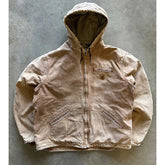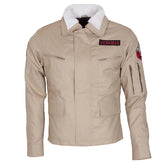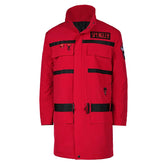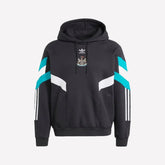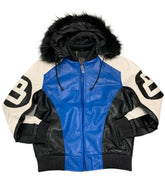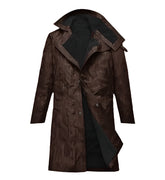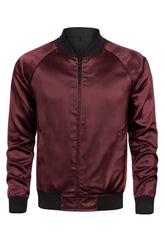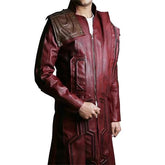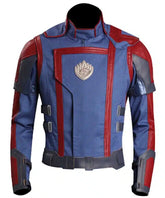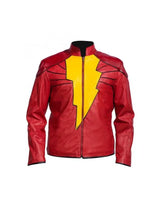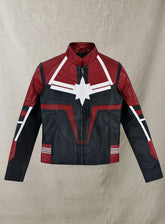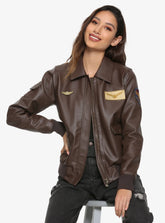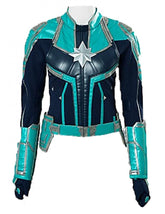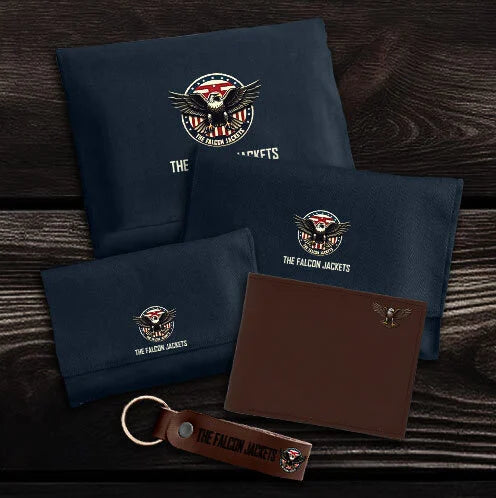Women’s Jackets: Warmth, Style & Weather-Ready Picks That Actually Last
Let’s be honest — that cute jacket from last winter? Already stiff, peeling at the seams, or buried under scarves by March. You’re not alone. Every year, thousands of women across the UK and US buy jackets based on looks alone — only to regret it when the wind sneaks in, the hood flops uselessly in rain, or the zipper gives up mid-commute.
It’s not just about staying warm. A bad jacket throws off your whole outfit, restricts movement, and ends up costing more in replacements than if you’d just chosen right the first time.
So what actually works — for real weather, real lives, and real wardrobes?
Forget fast-fashion trends and influencer hype. Whether you're dodging Manchester drizzle, battling New York wind tunnels, or heading out for weekend hikes in the Lake District or Rockies, this guide cuts through the noise. We’re breaking down the seven essential women’s jacket types that solve real problems — and why so many popular picks fail when it matters most.
1. Women’s Shearling Jacket
Best for: Cold urban days, statement style with serious warmth
Think rich texture, buttery soft lining, and instant edge. Originally built for pilots, today’s shearling jackets for women blend retro cool with functional insulation.
Pros:
-
Naturally insulating (sheepskin traps heat even when damp)
-
Wind-resistant outer leather or suede
-
Ages beautifully — develops a unique patina over time
Cons:
-
Heavy if poorly lined
-
Needs special care (no machine washing!)
-
Can feel bulky under coats
Who should grab one:
Anyone who wants a head-turning piece that works from city streets to country weekends. Ideal for autumn through early winter.
Care tip:
Air after wear, condition leather every few months, and store on a wide hanger. Avoid folding — creases can crack the hide.
Real talk: Faux shearling has come a long way. Brands like AllSaints and Reiss offer cruelty-free versions that look and feel premium — perfect for ethical shoppers.
2. Women’s Bomber Jacket
Best for: Cool autumn nights, sporty-chic layering, casual versatility
From military roots to streetwear staple, the bomber jacket for women is a timeless go-to. But not all are created equal.
Pros:
-
Snug ribbed cuffs and hem lock in warmth
-
Lightweight options for spring/fall; insulated styles handle winter
-
Pairs effortlessly with jeans, dresses, even workwear
Cons:
-
Basic nylon bombers offer zero weather protection
-
Short length leaves lower back exposed in cold winds
Upgrade wisely:
Look for bomber jacket women styles filled with down or synthetic insulation — especially those with storm flaps and water-resistant shells. These perform in sub-zero temps without sacrificing style.
Pro styling hack:
Tuck into high-waisted trousers or wear over a turtleneck for polished downtown vibes.
3. Women’s Varsity Jacket
Best for: Weekend flair, campus-ready looks, transitional seasons
Inspired by American college culture, the varsity jacket women love brings playful nostalgia — but only works if upgraded for real conditions.
Pros:
-
Bold contrast sleeves (usually ribbed or leather)
-
Fun colours and patches add personality
-
Cotton-blend bodies breathe better than full polyester
Cons:
-
Thin padding = minimal warmth
-
Often lacks proper lining or weatherproofing
Who needs it:
Students, creatives, anyone who values self-expression over extreme weather readiness.
Smart pick:
Choose a modern varsity jacket with quilted lining or thermal mesh inside. Some brands now integrate DWR finishes and hidden hoods — turning retro into resilient.
4. Women’s Blazer
Best for: Office wear, smart-casual events, year-round polish
Don’t underestimate the power of a well-cut blazer. In recent years, women’s blazers have evolved beyond boardrooms — becoming hybrid pieces that bridge professional and practical.
Pros:
-
Instantly elevates any outfit
-
Wool blends retain heat in winter
-
Technical fabrics now offer stretch, wrinkle resistance, and light water repellency
Cons:
-
Traditional wool can be itchy or heavy
-
Not inherently weatherproof unless treated
Look for:
"Performance" blazers made with weather-ready wool blends or softshell materials. Great for commuting professionals who need to go from train to meeting room dry and composed.
Fit focus:
Always check sleeve length and shoulder seam placement. Ill-fitting blazers ruin posture and proportions — no matter how expensive they seem.
5. Women’s Puffers
Yes, “puffers” deserve their own category — and their dominance is earned.
From cropped silhouettes to floor-grazing parkas, puffer jackets for women dominate cold climates because they work.
Fill Power Guide:
|
Fill Level |
Insulation |
Best For |
|
550–650 |
Everyday warmth |
Cities, light snow |
|
700+ |
High loft, max heat |
Rural areas, -10°C and below |
Pros:
-
Ultra-lightweight for the warmth delivered
-
Packable designs ideal for travel
-
Hooded and longline options protect against icy gusts
Watch outs:
-
Down loses insulation when wet → opt for synthetic-filled puffers in rainy zones (we see you, Glasgow and Seattle).
-
Cheap stitching leads to clumping — look for baffle-box construction to keep fill evenly distributed.
Style note:
Cropped puffers flatter high-waisted bottoms. Longline versions shield hips and thighs — crucial for sensitive-to-cold bodies.
6. Women’s Coats
When frost bites and daylight fades by 4 PM, short jackets won’t cut it. Enter: the true winter coat.
This includes:
-
Wool blend coats (classic trench, double-breasted)
-
Teddy coats (plush, sherpa-like, vegan-friendly)
-
Parkas (extended coverage, fur-trimmed hoods)
What makes a great women’s winter coat?
-
Storm flaps over zippers
-
Internal waist drawcord to block drafts
-
Reinforced shoulders (resists snow buildup)
-
Deep, lined pockets (hello, handwarmers)
-
Tall-friendly lengths (many brands now offer coats for tall women)
Plus size alert:
More brands than ever offer plus size winter coats for women up to UK 24, but always check sleeve length and torso fit — too often these remain an afterthought.
Top performers:
Barbour, Mackage, Canada Goose (for extreme cold), and lesser-known gems like Finisterre (eco-conscious, UK-made).
7. Women’s Vest
Best for: Layering genius, core warmth without arm restriction
Often overlooked, the women’s vest is a secret weapon in smart dressing.
Why you need one:
-
Keeps your torso warm while allowing full arm motion
-
Slips easily under coats or over sweaters
-
Perfect for indoor-outdoor transitions (AC-heavy offices, anyone?)
Types include:
-
Quilted down/synthetic vests – sleek and warm
-
Fleece gilets – breathable, great for active days
-
Puffer gilets – modern favourite for urban layering
Common mistake:
Wearing thick layers underneath. Instead, pair with a merino base + lightweight jumper to avoid bulk.
Pro tip:
Use a vest as a mid-layer under a rain shell or wool coat. It adds warmth without weight — ideal for variable weather.
The Truth About Fit No One Talks About
Most online guides stop at "check the size chart." But fit isn’t just numbers — it’s about movement, proportion, and how you live.
Before buying any women’s jacket:
Try this real-world test:
-
Wear a medium-weight sweater
-
Zip up the jacket
-
Raise both arms fully overhead
If it rides up past your hips or pulls across the chest — it doesn’t fit, even if the tag says “perfect.”
Also consider:
-
Torso length: Tall women need longer cuts. Standard coats ride high and expose backs.
-
Sleeve drop: Motorcycle-style jackets often have forward-set sleeves — comfy on bikes, awkward walking.
-
Hood mobility: Does it block side vision? Critical for drivers and cyclists.
Which Women’s Jacket Should You Buy First?
Your lifestyle and climate decide:
|
SCENARIO |
RECOMMENDED JACKET |
|
Cold city winters (London, Toronto) |
Insulated puffer with hood |
|
Wet coastal areas (Seattle, Cardiff) |
Waxed coat or technical shell |
|
Variable temps (autumn/spring) |
Sherpa-lined denim or quilted jacket |
|
Extreme cold (-10°C or below) |
Long down parka (700+ fill) |
|
Daily commute + office |
Wool-blend trench or tailored coat |
|
Weekend adventures |
North Face Nuptse or similar performance puffer |
|
Travel/light use |
Lightweight packable vest or puffer |
Never underestimate lightweight jackets for women — perfect for sudden showers, flights, or freezing office AC.
How to Make Your Women’s Jacket Last Years (Not Months)
Even the best shearling coat fails fast with poor care. Avoid these common mistakes:
Machine-drying leather or suede → Causes cracking and shrinkage
Storing puffers compressed → Crushes down clusters, kills loft
Washing waterproofs with regular detergent → Clogs pores; use Nikwax Tech Wash
Ignoring zipper maintenance → Run a graphite pencil along sticky zippers to lubricate
Do this instead:
-
Hang heavy coats on broad wooden hangers
-
Store puffers loosely in cotton bags
-
Air out after every wear — never stash damp gear
-
Condition leather 2x/year
Real Questions, Straight Answers
Q: What’s the difference between a puffer and a down coat?
A: All down coats are puffers, but not all puffers are down. “Puffer” refers to the quilted design. Fill can be duck down, synthetic fibers, or blends. Down is warmer per ounce — but fails when wet. Synthetic keeps working even soaked.
Q: Are faux fur coats worth it?
Yes. Modern faux fur coat women styles resist matting, mimic real texture, and handle rain better. Brands like Mackage and Reiss make ones that last years with care.
Q: Can I wear a bomber jacket in winter?
Standard ones? Too thin. But insulated bomber jackets for women with ribbed seals trap heat surprisingly well. Add a scarf for neck gaps.
Q: Is a trench coat good for rain?
Only if it’s waterproof, with taped seams and storm flaps. Traditional gabardine absorbs moisture over time.
Q: What’s the warmest option for someone cold-sensitive?
Layer smart: thermal base + fleece mid + longline women’s winter jacket rated to -15°C. Coverage beats thickness.
Q: Do motorcycle jackets work for daily wear?
Absolutely — ditch removable armor if not riding. Go for faux leather jacket women designs with subtle padding. Sleek, protective, and stylish.
Final Word: Stop Buying Jackets That Don’t Last
Your outerwear shouldn’t be disposable.
The best women’s jackets do three things:
Handle your local weather — honestly
Move with your body — not against it
Stay sharp after years of real use
Whether it’s a corduroy jacket for crisp October mornings or a snow-ready parka built for blizzards, choose purpose over trend.
And remember:
The most stylish woman in the room isn’t the one wearing the logo.
She’s the one who stays dry, warm, and unbothered — while everyone else zips, shivers, and regrets their choices.
Now go find your perfect match — and keep it for years.






